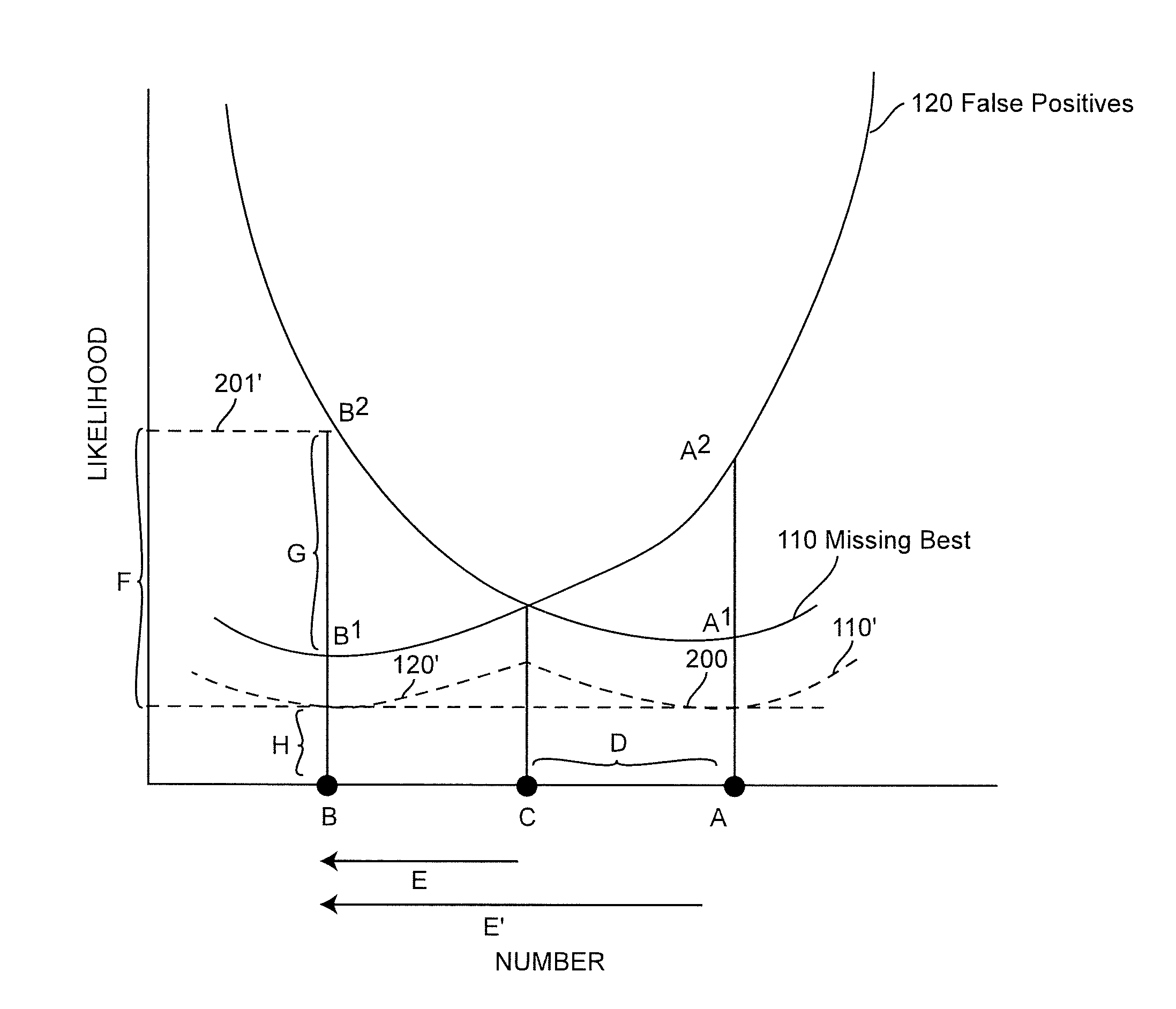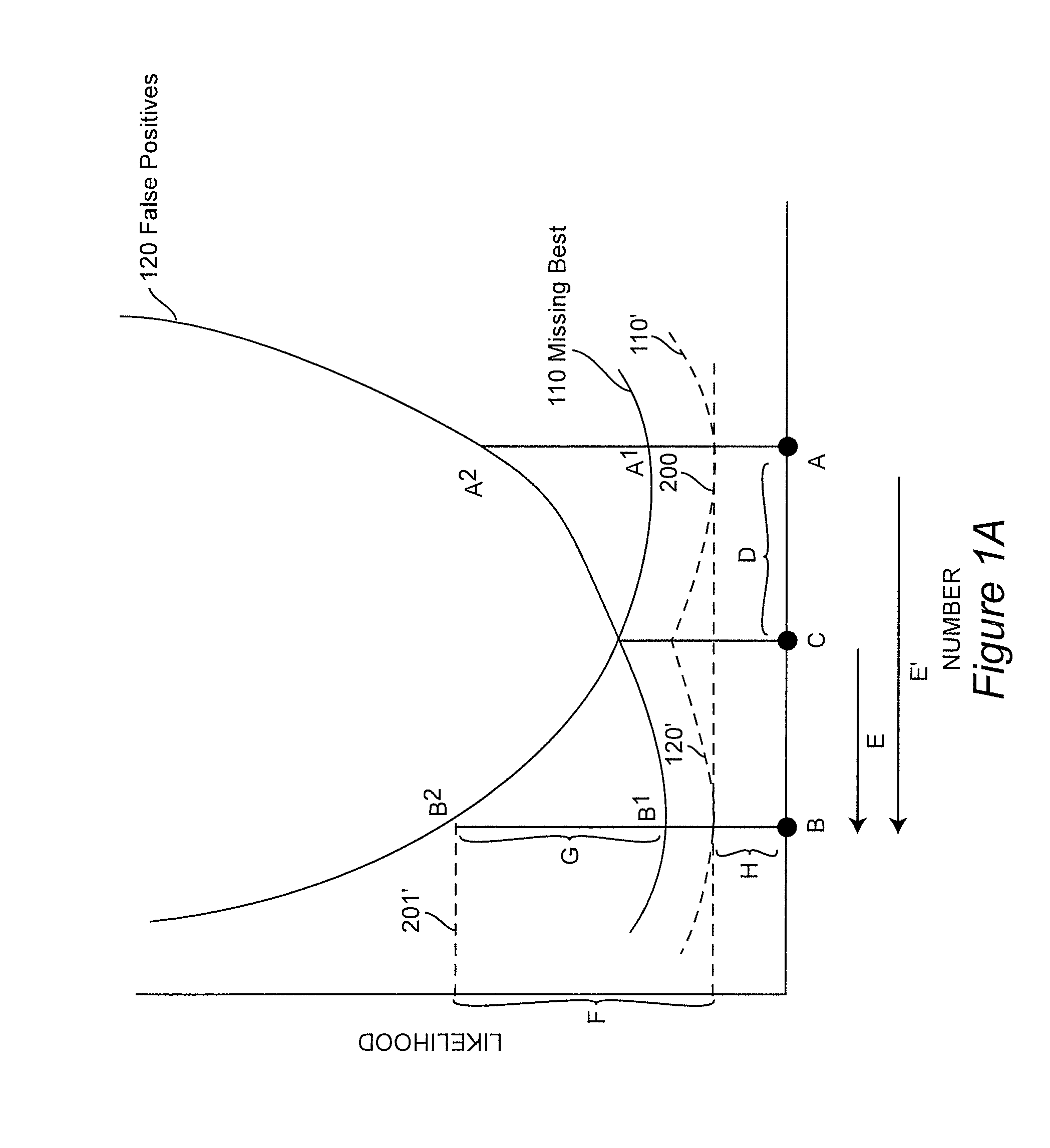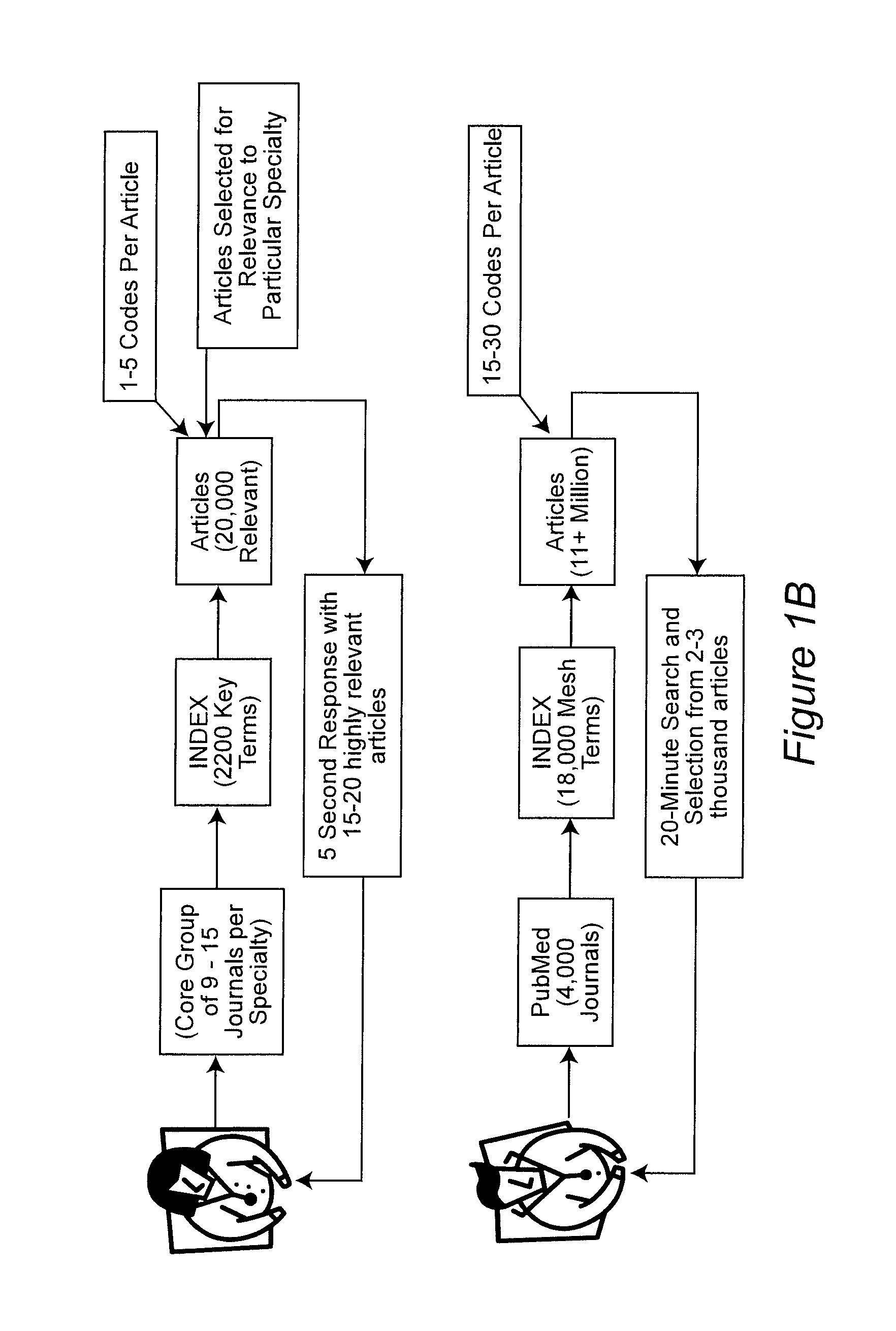Database and Index Organization for Enhanced Document Retrieval
a database and index technology, applied in the field of customized, specialty-oriented database and index, can solve the problems of time-consuming, overwhelming, frustrating and impractical tasks, and increasing the amount of irrelevant and inaccurate information (often referred to as “noise”)
- Summary
- Abstract
- Description
- Claims
- Application Information
AI Technical Summary
Benefits of technology
Problems solved by technology
Method used
Image
Examples
Embodiment Construction
[0043]The present invention provides a specialty-oriented, customized database containing current, authoritative and highly relevant information about a topic of interest, and methods for the development and use of such a database. The customized database is organized according to individual specialty or interest areas within the topic of interest, and a database of the invention includes one or more of collections of information for one or more specialty or interest areas.
[0044]It is important to an understanding of the approach taken in accordance with the invention to classification and search of an accumulating database to observe that the purpose and goal of document retrieval in accordance with the invention is much different from many other databases and classification systems and search techniques known in the art. Specifically, it has been a primary goal of known databases and search systems to retrieve all documents which may be relevant to the search query and certainly t...
PUM
 Login to View More
Login to View More Abstract
Description
Claims
Application Information
 Login to View More
Login to View More - R&D
- Intellectual Property
- Life Sciences
- Materials
- Tech Scout
- Unparalleled Data Quality
- Higher Quality Content
- 60% Fewer Hallucinations
Browse by: Latest US Patents, China's latest patents, Technical Efficacy Thesaurus, Application Domain, Technology Topic, Popular Technical Reports.
© 2025 PatSnap. All rights reserved.Legal|Privacy policy|Modern Slavery Act Transparency Statement|Sitemap|About US| Contact US: help@patsnap.com



